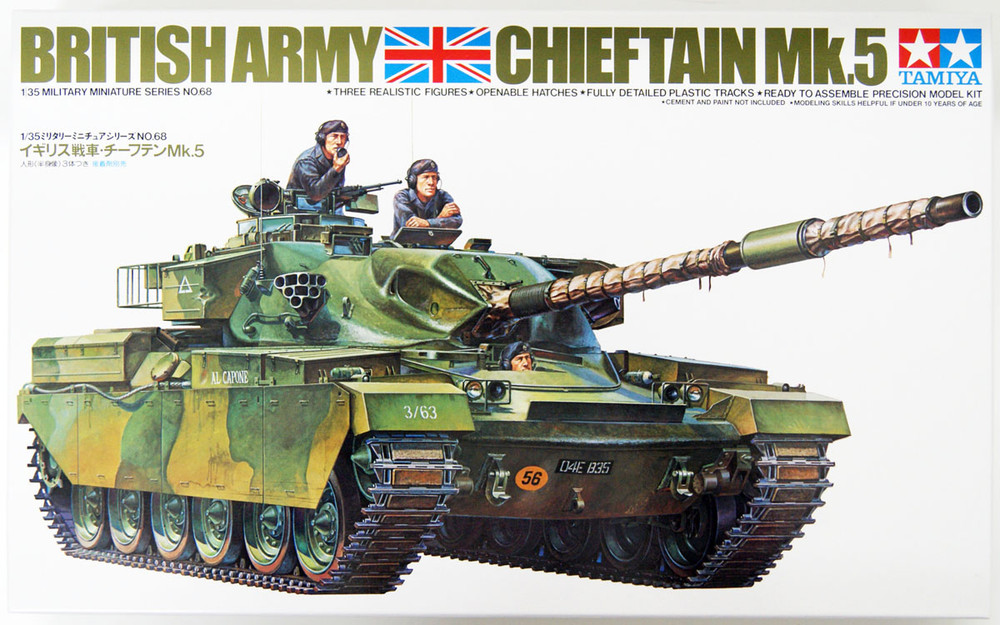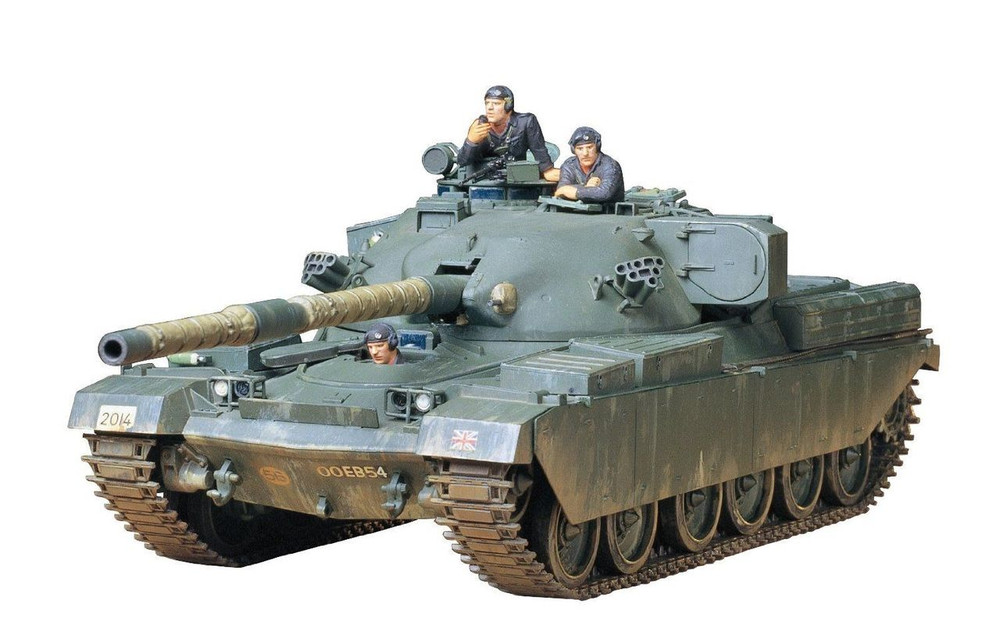Our products are now delivered by 

SKU: 4950344995486
Out of stock
18.72 €
This item is out of stock in all of our stores, however you can subscribe to in-stock notifications.
This item is out of stock in all of our stores, however you can subscribe to in-stock notifications.
Our products are now delivered by 

Stock in Store
| Stores | Quantities | ||
|---|---|---|---|
|
Not available
|
QUÉBEC | 0 | |
|
Not available
|
LAVAL | 0 | |
|
Not available
|
ST-BRUNO | 0 | |
|
Not available
|
SHERBROOKE | 0 | |
|
Not available
|
TROIS-RIVIÈRES | 0 | |
|
Not available
|
LÉVIS | 0 | |
|
Not available
|
OTTAWA | 0 | |
|
Not available
|
POINTE-CLAIRE | 0 | |
|
Not available
|
CHICOUTIMI | 0 | |
Description
The Chieftain Tank is one of the best known of the present generation of battlefield weapons, and is one of the most heavily armoured and armed fighting behicles in service anywhere today. It has not been without its detractors or critics, however, and there has been a running debate by military commentators for several years past on the relative merits of the British Chieftain Tank compared with the main battle tanks of other great military powers- the United States, Soviet Russia, France and West Germany – whose present equivalent designs afford a fasinating contrast with Chieftain in many key aspects.
The Chieftain, however, was developed as a result of British tank experience in World War II and after, and reflects the priorities which British tank men felt to be the most important terms of firepower, protection and mobility. British tank development in World War II resulted in the famous Centurion, which first appeared in 1945 in the closing weeks of the war. The Centurion, together with the Soviet T-34/85, and German Panther, represented the culmination of thinking (arising from actual experience) which pointed the need for a “universal” tank had, meanwhile, been disturbed by the appearance of the Soviet Josef Stalin II tank in 1945, with a powerful 122mm gun.
In the Immediate post-war years it became clear that Soviet Russia and her East European allies (later the Warsaw Pact powers) posed the greatest threat to Western Europe in any future conflict, and this led, subsequently, to the setting up of NATO. If war broke out, much of the initial fighting at least would take place in Europe, notably in Northern Germany, and Britain’s armoured divisions were either located in or earmarked for deployement to Germany. The backbone of the Soviet armoured divisions in the 1950’s was the formidable JS-III and its T-1- derivative, both with the 122mm gun, which could out shoot the 20 pdr. (84 mm)gun of the early service versions of Centurion. To strengthen the firepower of the Centurion, therefore, the British developed an introduced a “heavy tank gun”, the conqueror with a 120mm gun specifically to match the Stalin. The Centurion at this time was classed as a “medium gun tank”. The Conqueror was unsatisfactory in many ways; it was very heavy, noisy, relatively slow, and made an extra logistic liability for relatively few vehicles. By 1066 the Conqueror was withdrawn from service and an up gunned Centurion with 105 mm gun was in service.
Assembly and painting required. Kit does not include model cement glue, paint, tools, and adult supervision where required.
TANK - BRITISH CHIEFTAIN MK.5 - 1/35 - TAMIYA is categorised DIE-CAST AND SCALE MODELS / MODEL KITS / TANK and sold by l'Imaginaire, a store and specialised website.
The Chieftain, however, was developed as a result of British tank experience in World War II and after, and reflects the priorities which British tank men felt to be the most important terms of firepower, protection and mobility. British tank development in World War II resulted in the famous Centurion, which first appeared in 1945 in the closing weeks of the war. The Centurion, together with the Soviet T-34/85, and German Panther, represented the culmination of thinking (arising from actual experience) which pointed the need for a “universal” tank had, meanwhile, been disturbed by the appearance of the Soviet Josef Stalin II tank in 1945, with a powerful 122mm gun.
In the Immediate post-war years it became clear that Soviet Russia and her East European allies (later the Warsaw Pact powers) posed the greatest threat to Western Europe in any future conflict, and this led, subsequently, to the setting up of NATO. If war broke out, much of the initial fighting at least would take place in Europe, notably in Northern Germany, and Britain’s armoured divisions were either located in or earmarked for deployement to Germany. The backbone of the Soviet armoured divisions in the 1950’s was the formidable JS-III and its T-1- derivative, both with the 122mm gun, which could out shoot the 20 pdr. (84 mm)gun of the early service versions of Centurion. To strengthen the firepower of the Centurion, therefore, the British developed an introduced a “heavy tank gun”, the conqueror with a 120mm gun specifically to match the Stalin. The Centurion at this time was classed as a “medium gun tank”. The Conqueror was unsatisfactory in many ways; it was very heavy, noisy, relatively slow, and made an extra logistic liability for relatively few vehicles. By 1066 the Conqueror was withdrawn from service and an up gunned Centurion with 105 mm gun was in service.
Assembly and painting required. Kit does not include model cement glue, paint, tools, and adult supervision where required.
TANK - BRITISH CHIEFTAIN MK.5 - 1/35 - TAMIYA is categorised DIE-CAST AND SCALE MODELS / MODEL KITS / TANK and sold by l'Imaginaire, a store and specialised website.
Editor :
TAMIYA
SKU: 4950344995486
Customer reviews
Store Reviews from our Customers
| sylvain t. | Report this review |
| 30/12/2020 | |
| Le char d'assault tank chieftain mk.5 britannique | |
| Le char d'assault tank chieftain mk.5 je suis tres satisfait de ce produit la. Et je verifie pour voir s'il y a de nouveau produit tres intérressant . Et j'aime vos produit de tres bonne qualité et je vais le recommandé a des amis. | |






